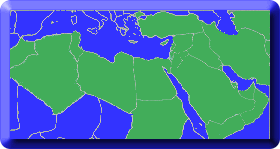
Topics in Middle Eastern and North African Economies
Document Type
Article
Publication Date
5-1-2020
Journal Title
Topics in Middle Eastern and North African Economies
Volume
22
Issue
1
Publisher
Middle East Economic Association and Loyola University Chicago
Abstract
This paper investigates several key challenges faced by oil-rich countries regarding their economic growth and development. First, it discusses how to determine currency overvaluation for these countries (if any). To determine the overvaluation, the real exchange rate (RER) is calculated and the Balassa–Samuelson effect is estimated via a regression model. Next, the study presents an empirical model for assessing the impact of oil rent on economic growth in the context of currency overvaluation and the institutional quality in every country. As a dynamic model, both endogeneity and heterogeneity are expected across cross-sections because countries are different in culture, customs, and political institutions. Consequently, heterogeneous panel data analysis is undertaken using the error correction model cointegration technique and the mean group estimation method in an autoregressive distributed lag model. Finally, the study concludes the findings and provides policy recommendations by offering a new perspective on an ongoing dilemma, discussing the challenges and limitations facing developing oil-rich countries and how their path to success may differ from other countries.
ISSN
2334-282X
Recommended Citation
Motameni, Alireza, "The Impact of Oil Rent, Currency Overvaluation, and Institution Quality, on Economic Growth of Oil-Rich Countries: A Heterogeneous Panel Data Study". Topics in Middle Eastern and North African Economies, electronic journal, 22, 1, Middle East Economic Association and Loyola University Chicago, 2020, http://www.luc.edu/orgs/meea/
Creative Commons License

This work is licensed under a Creative Commons Attribution-Noncommercial-No Derivative Works 3.0 License.
Copyright Statement
© The Author, 2020



Comments
Presentation of the articles in the Topics in Middle Eastern and North African Economies was made possible by a limited license granted to Loyola University Chicago and Middle East Economics Association from the authors who have retained all copyrights in the articles.